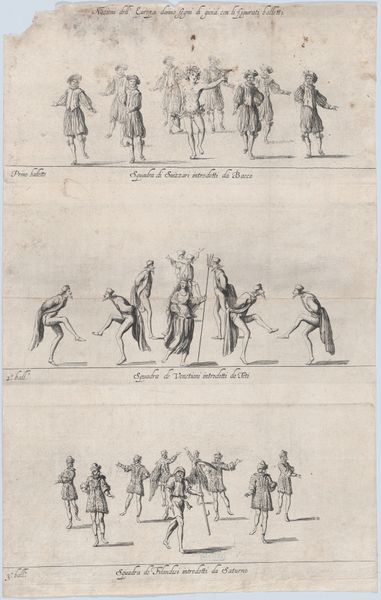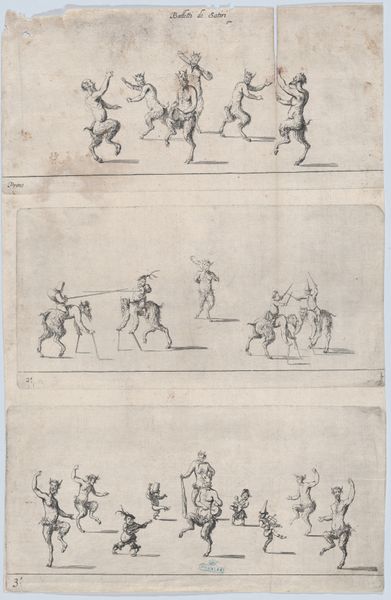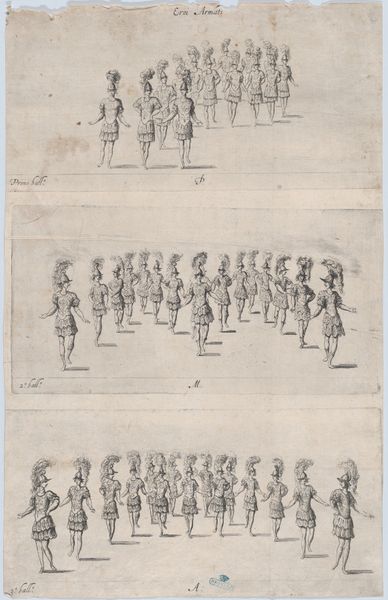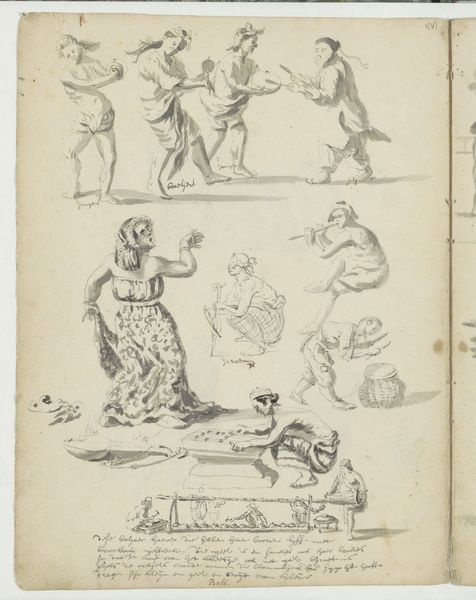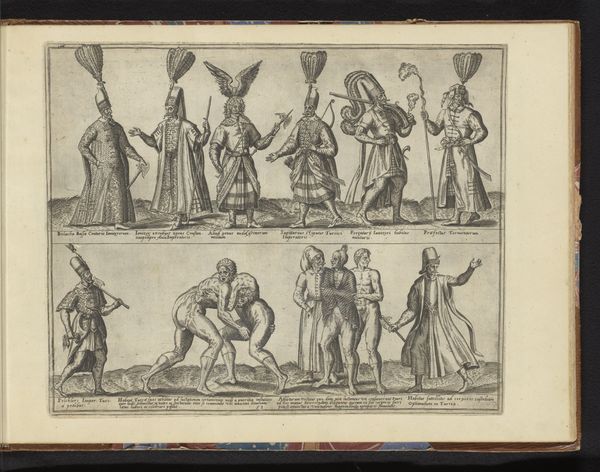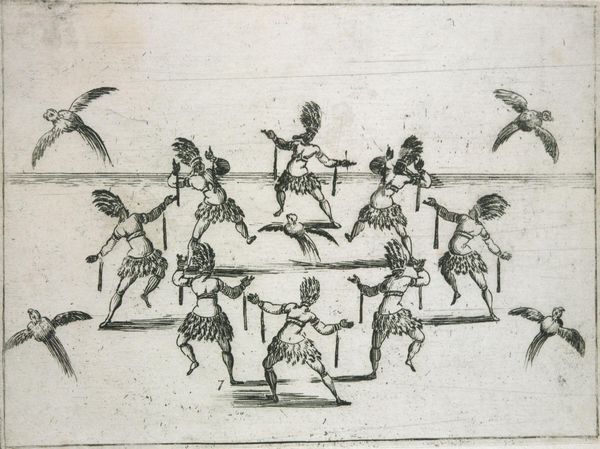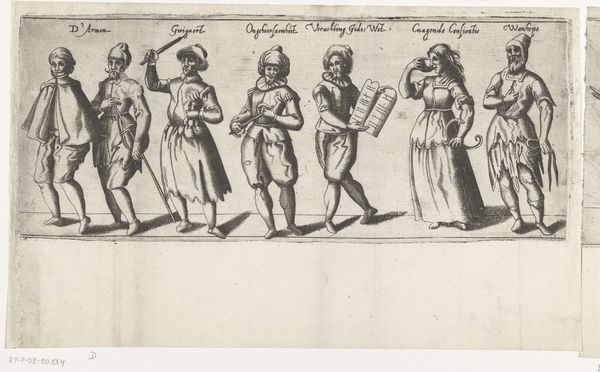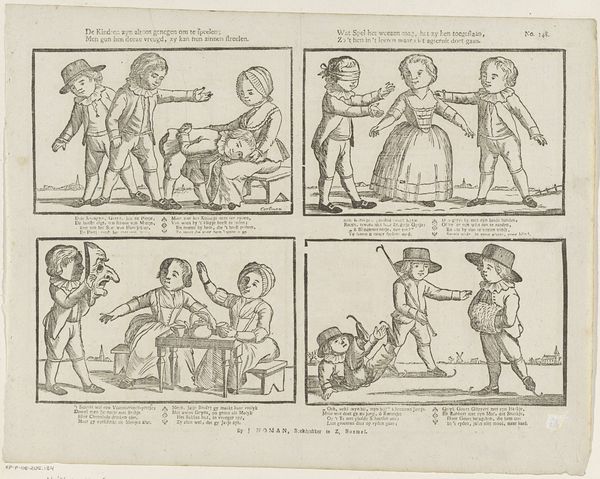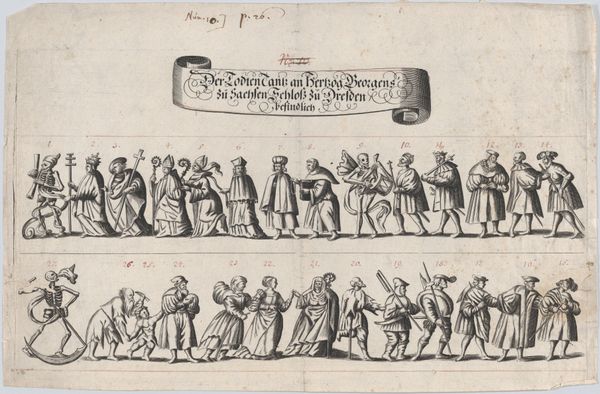
drawing, print
#
drawing
#
baroque
# print
#
figuration
#
history-painting
Dimensions: Sheet: 15 5/8 in. × 10 in. (39.7 × 25.4 cm)
Copyright: Public Domain
Editor: Here we have "Nations of America ballets," a 17th-century drawing currently held at the Metropolitan Museum of Art. It’s fascinating seeing these figures depicted in such stark, almost scientific detail. What jumps out to you about this print? Curator: Immediately, I'm struck by the representation of "America" within a European context. We have to ask, what narrative is being constructed here? What power dynamics are at play when "nations" are presented as staged performances? Editor: So it's not simply documentation, but an active interpretation? Curator: Precisely. Look at the costumes, the poses. They're not neutral observations, but deliberate constructions intended for a specific audience. The print attempts to classify and contain these “nations,” likely reflecting colonialist attitudes. What does it mean to present different cultures as essentially balletic spectacles? Editor: I see your point. It almost dehumanizes the people being represented. They are like exotic curiosities. The second ballet features individuals wielding bows and arrows, whilst the first showcases figures with pickaxes, reflecting stereotypical or functional associations? Curator: Exactly. It reduces complex cultures to simple, easily digestible images. And what is omitted is just as important. Where are the Indigenous voices? Who gets to control the narrative? It raises serious questions about cultural appropriation and misrepresentation. What lasting effects might stem from such visuals? Editor: Thinking about it that way, this Baroque print prompts us to consider who is given the authority to represent other cultures and to question those portrayals, right? Curator: Absolutely. Art isn’t created in a vacuum. By interrogating historical pieces, we gain valuable insight into ongoing struggles with representation, power, and cultural understanding. Editor: Thank you! It really gave me a new understanding of prints within a historicized narrative and post-colonial mindset.
Comments
No comments
Be the first to comment and join the conversation on the ultimate creative platform.
